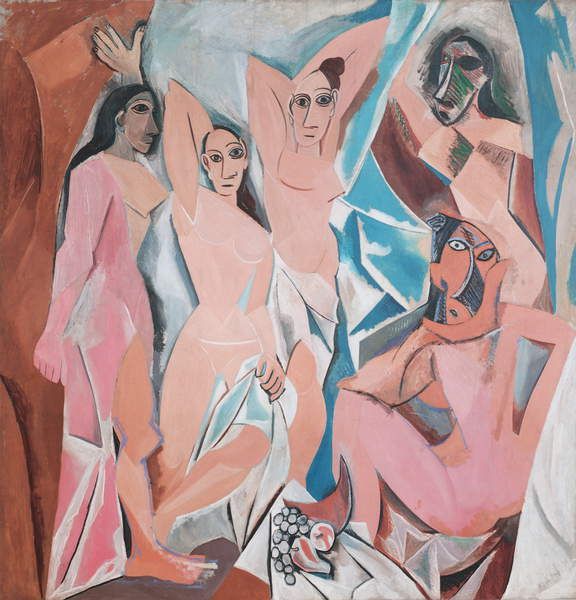
After 9 months’ work and more than 700 preparatory drawings and paintings, we may safely say that the painting Les Demoiselles d’Avignon was a major work for Picasso. In addition to this, many avant-garde artists came to see it in his workshop in the Bateau-Lavoir in Paris, initially finding it hard to understand.
These “demoiselles” were, in fact, prostitutes working in rue d’Avignon, a street in Barcelona. Where did Picasso find inspiration for this new style? He gave birth to the artistic movement of “Primitivism” by looking at African art, especially masks.


For his masterpiece Les Demoiselles d’Avignon, Picasso drew inspiration from African masks.
Picasso grew up in Spain. He was a child prodigy: “When I was 8 years old I could draw like Raphaël, but it took a lifetime to learn how to draw like a child.”
When he was 20 years old, his friend Casegemas committed suicide. Picasso entered what is known as his “blue period”, portraying misery and suffering in shades of blue.
In 1904 he moved to Paris and entered his “rose” period, painting harlequins and acrobats in soft shades of orange and pink.
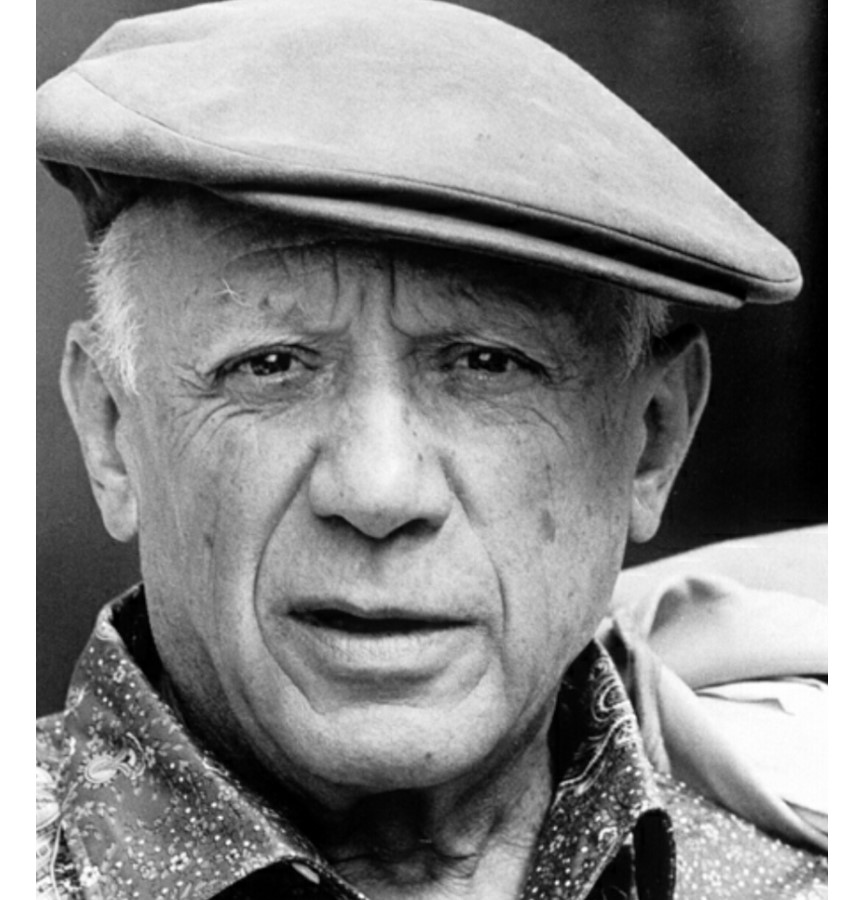
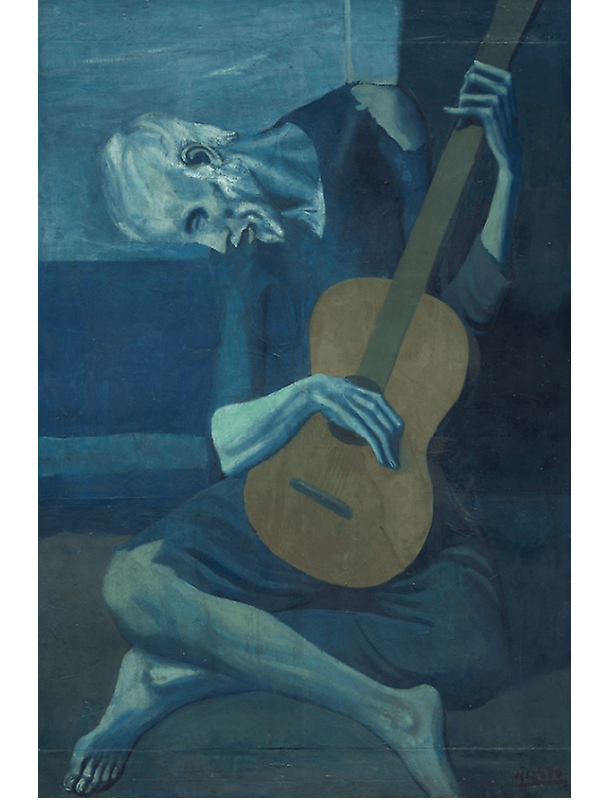
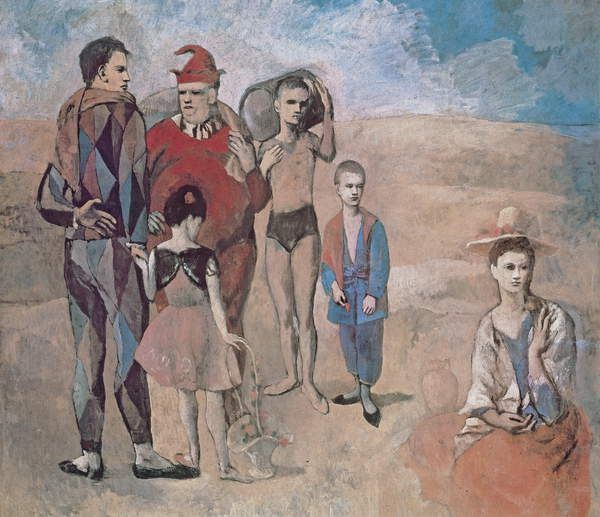
In 1907, he painted Les Demoiselles d’Avignon, (The Young Ladies of Avignon) breaking with all of Western artistic tradition and launching the Cubist movement with Braque.
After Cubism, he continued to produce tens of thousands of works, including Guernica in 1937, a masterpiece marking his anti-war commitment.
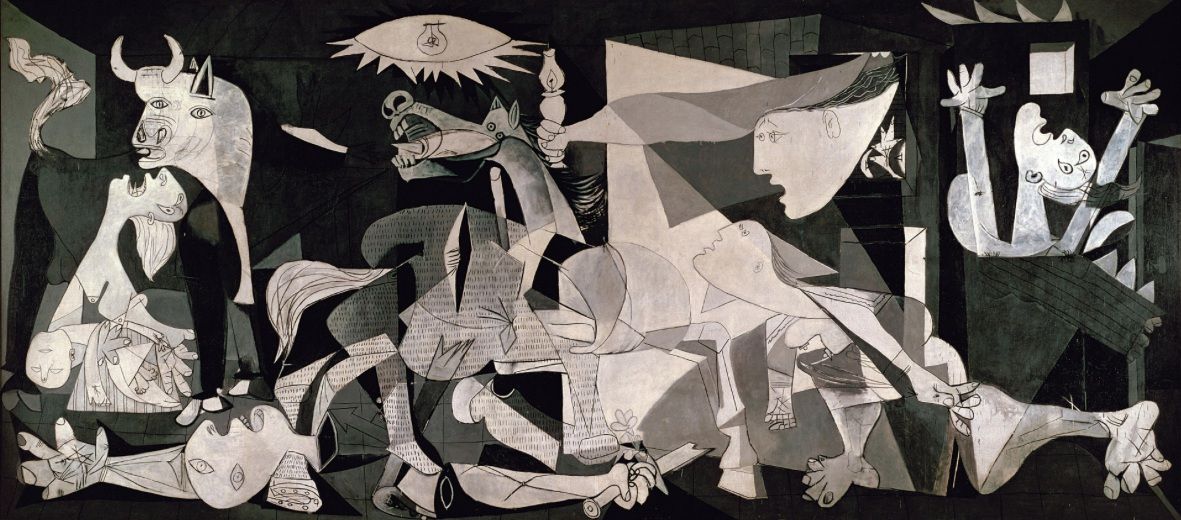
Like Fauvists and Expressionists, Cubist painters did not want to paint an exact copy of what they saw (reality) but rather to show the truth.
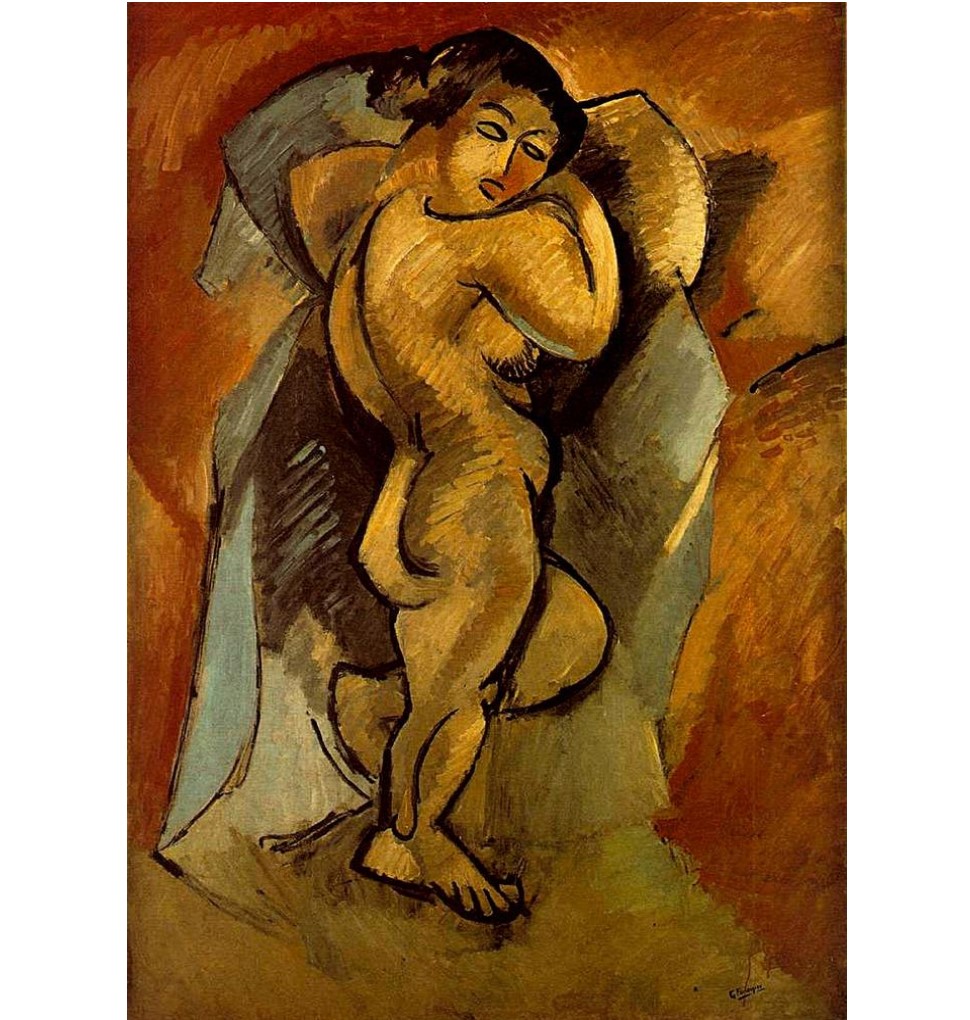
Now, truth cannot be reduced to a single point of view. For example, showing only one side of a house does not show the “truth” about the house, because it is only seen from one viewpoint! All the sides need to be shown to help try and grasp the “truth” about it.

Cubism is an attempt to show the truth about its subjects, which means showing all aspects.
Expressionism did not end at the beginning of the 20th century, far from it. After the First World War, German artists who had fought in the trenches wanted to portray the appalling violence of the fighting.
This was why they used an Expressionist style to demonstrate their revulsion for the society responsible for this massacre. They were not part of a school as such. These artists simply picked up their brushes to express what they were experiencing during the same period.
It was in fact only in 1925 that a German exhibition entitled New Objectivity gave a name to this group of artists.

After the Great War, German artists denounced the evils of their era, giving birth to the “New Objectivity”.
In fact, Fauvism belongs to a wider artistic family known as “Expressionism”. Okay, but what does that mean?
Unlike the Impressionists (Monet, for example), who painted everything they saw during their daily life with a certain lightness of touch, Expressionists portrayed strong, violent personal feelings, with distorted shapes, in order to communicate a strong emotion to the viewer.

Expressionist artists shared their every mood, sometimes violently.
Before the wild beasts’ cage affair, Matisse and Derain took a great interest in Divisionists, artists who painted using little spots of colour alongside each other.
Some people mockingly called them the “Pointillists” because these little spots of colour looked like tiny dots (“points” in French).
Matisse spent the summer of 1904 with Signac, who was one of the Divisionists, and went on to paint Luxe, calme et volupté (Luxury, Serenity and Pleasure) using this technique. But from the next year onwards, his use of little dots was over. They gave way to large splashes of solid colour.

Divisionists like Signac paint using little spots of colour alongside each other.
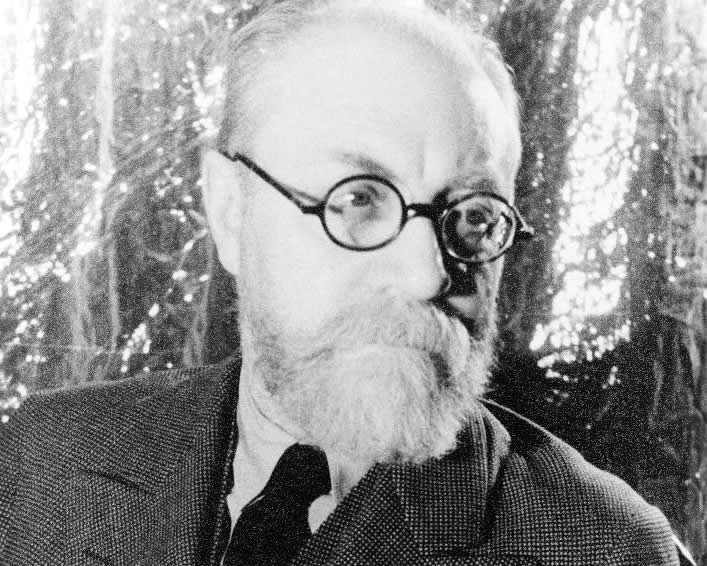
This word comes from military language. The avant-garde are soldiers who go out before the rest of the army. If there are any enemies along the way, they are the first to be attacked. Only the bravest soldiers are put in this position!
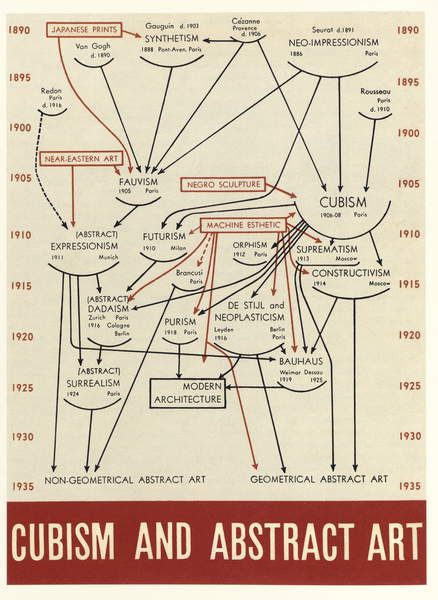
The term avant-garde, applied to art, describes artists who are ahead of others, who take risks by trying out new things.
At the beginning of the 20th century, many of them tried to blow tradition apart by reinventing art.

In art history, the term avant-garde describes artists who overturn traditions and introduce radical innovations.
Its use of simplified shapes and bright colours unrelated to reality was a search for expressing emotions rather than representing the world exactly as it is.
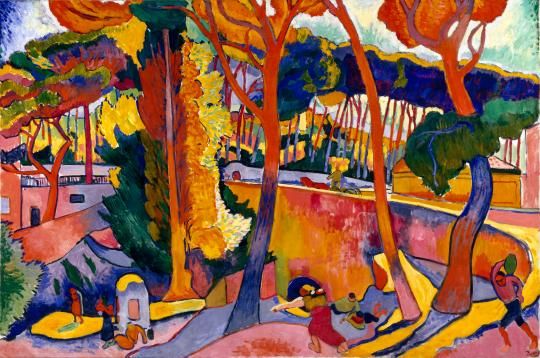

Fauvism expresses emotions using bright colours and simplified shapes.

"*" indicates required fields